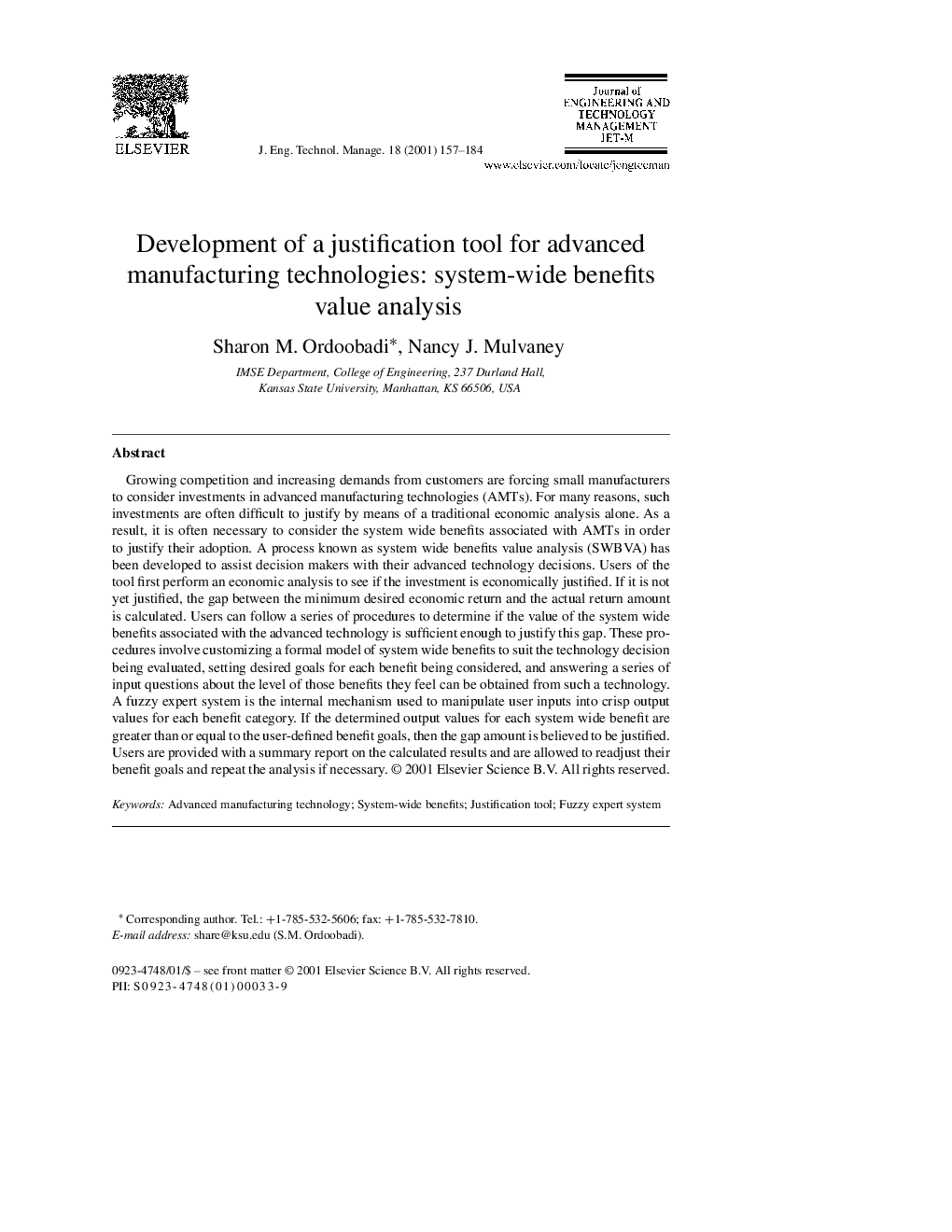| Article ID | Journal | Published Year | Pages | File Type |
|---|---|---|---|---|
| 10489820 | Journal of Engineering and Technology Management | 2001 | 28 Pages |
Abstract
Growing competition and increasing demands from customers are forcing small manufacturers to consider investments in advanced manufacturing technologies (AMTs). For many reasons, such investments are often difficult to justify by means of a traditional economic analysis alone. As a result, it is often necessary to consider the system wide benefits associated with AMTs in order to justify their adoption. A process known as system wide benefits value analysis (SWBVA) has been developed to assist decision makers with their advanced technology decisions. Users of the tool first perform an economic analysis to see if the investment is economically justified. If it is not yet justified, the gap between the minimum desired economic return and the actual return amount is calculated. Users can follow a series of procedures to determine if the value of the system wide benefits associated with the advanced technology is sufficient enough to justify this gap. These procedures involve customizing a formal model of system wide benefits to suit the technology decision being evaluated, setting desired goals for each benefit being considered, and answering a series of input questions about the level of those benefits they feel can be obtained from such a technology. A fuzzy expert system is the internal mechanism used to manipulate user inputs into crisp output values for each benefit category. If the determined output values for each system wide benefit are greater than or equal to the user-defined benefit goals, then the gap amount is believed to be justified. Users are provided with a summary report on the calculated results and are allowed to readjust their benefit goals and repeat the analysis if necessary.
Related Topics
Social Sciences and Humanities
Business, Management and Accounting
Accounting
Authors
Sharon M Ordoobadi, Nancy J Mulvaney,
